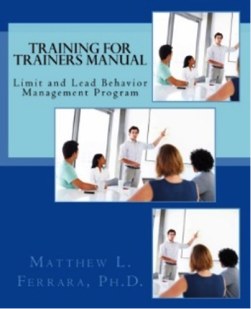Few of us were around in the 1970’s when Martinson published his treatise, often referred to as “Nothing Works.” Martinson’s treatise spawned a great deal of reactionary research that quickly dispatched the “Nothing Works” treatise. In fact, Martinson’s data was reanalyzed and even his data showed that some rehabilitation interventions reduce recidivism.
Thanks to the research of Gendreau, Ross, Cullen, Andrews, Logan, Bailey, Palmer and many others, we no longer need to address the question, What Works…to reduce recidivism? We now ask the question, What Works with Whom. In other words, the focus of rehabilitation research is now aimed at developing the Risk-Need-Responsivity Model.
For those working with conduct disordered youth in a residential setting, here’s what the research says. The research says you must keep youths safe and once you have established a safe environment, you can use evidence based interventions designed to reduce the youths’ risk for reoffenses.
Keeping youths safe is the primary goal of the Limit & Lead Behavior Management Training Program. The Limit & Lead Program also has a cognitive behavioral component designed to reduce recidivism, Limit & Lead Student Workbook.
This manual is the Training for Trainer’s Manual. It is used to train individuals to become trainers for the Limit & Lead Behavior Management Training Program. This manual is actually one of three manuals used to implement the Limit & Lead Behavior Management Training Program. The other two behavior management manuals are the Direct Care and Security Staff Trainee’s Handout and the Direct Care and Security Staff Trainer’s Manual. When all three manuals are used together, it is possible to establish a consistent, measurable, agency-wide behavior management program.
Decades of research about programing for conduct disordered youths shows that consistency is key. In order to have an effective behavior management program, all behavior management staff and supervisors must be trained in the same model and be monitored using meaningful criteria. The Limit & Lead Behavior Management Training Program affords all that and much more. All of the Limit & Lead workbooks and manuals have one overarching goal: No More Victims!
A program needs to be self-sustaining and this includes the Behavior Management Training Program. The Training for Trainers Manual was created so that an agency or program can train select staff to serve as trainers for the Limit & Lead Behavior Management Training Program.
The Training for Trainers Manual provides a training agenda and lesson plans that teach individuals how to use the Trainee Handout to train new and existing staff in the Limit & Lead Behavior Management Training Program. The Training for Trainers Manual provides complete instructions for training up to eight staff to become trainers. As is the case with other Limit & Lead program training materials, the Training for Trainers Manual contains evaluation forms and a comprehensive test.
Limit and Lead: Training for Trainers Manual Table of Contents
- Introduction
- 1
- Training Script
- 2
- Assigning Lesson Plans to Trainees
- 2
- Training Assignments
- 3
- Table of Didactic Lesson Plans taught during Training
- 4
- Table of Role Play Lesson Plans taught during Training
- 5
- Training Agenda
- 5
- Trainer Evaluation Form: Didactic Lesson Plan
- 10
- Written Feedback for Didactic Lesson
- 12
- Trainer Evaluation Form: Role Play Staff Person
- 13
- Written Feedback for Role Play Lesson
- 15
- Trainer Evaluation Form: Role Play Trainer
- 16
- Written Feedback for Role Play Lesson
- 18
- Summary of Evaluations
- 19
- Lesson One: Welcome and Overview
- 21
- Lesson Two: Trainer Qualifications
- 23
- Lesson Three: Lesson Plans
- 25
- Lesson Four: Training Script
- 26
- Lesson Five: Giving Feedback
- 28
- Lesson Six: General Guidelines
- 29
- Lesson Seven: Writing on Flip Charts and Boards
- 30
- Lesson Eight: Monitoring Forms
- 31
- Lesson Nine: Profiency Exam
- 33
- Lesson Ten: Trainer Demonstrates a Didactic Lesson
- 34
- Lesson Eleven: Trainer Demonstrates a Role Play Lesson
- 36
- Lesson Twelve: Evaluation Process
- 38
- Lesson Thirteen: Assigning Letters and Lessons to Trainees
- 39
- Lessons Fourteen (48 total): Trainees Practice Presenting Lessons
- 40
- Lesson Fifteen: Any Debriefing Session
- 42
- Lessons Sixteen: Make-up Sessions
- 43
- Lessons Seventeen: Proficiency Exam
- 44
